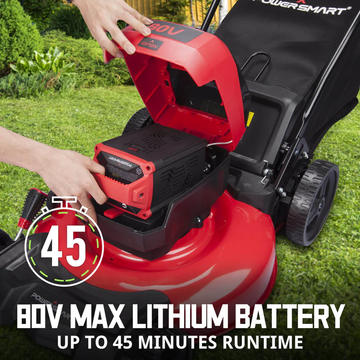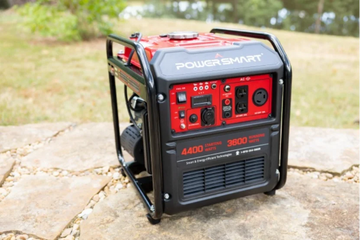
How to extend the battery life of an electric lawn mower?
Electric lawn mowers have become increasingly popular among homeowners due to their eco-friendliness and convenience. However, like all battery-operated devices, the longevity of an electric lawn mower's battery can significantly impact its performance. To ensure optimal use of these mowers, understanding how to extend battery duration is essential for efficiency and sustainability. This article delves into effective strategies for prolonging the battery life of an electric lawn mower, focusing on maintenance, proper usage, and charge management.
Understanding Electric Lawn Mower Batteries
Types of Batteries
Electric lawn mowers typically utilize two main types of batteries: lithium-ion and lead-acid. Lithium-ion batteries are lightweight, have a higher energy density, and experience less energy loss over time compared to lead-acid batteries. On the other hand, lead-acid batteries are generally more affordable but tend to weigh more and require more maintenance. Understanding the type of battery in your electric lawn mower is crucial for implementing the right strategies to extend its lifespan.
Importance of Battery Maintenance
Maintaining electric lawn mower batteries is essential for ensuring they last longer and perform at optimal levels. Regular maintenance can prevent issues such as battery degradation, reduced run times, and charging inefficiencies. By committing to proper care, users can maximize the use of their electric mowers while minimizing replacements and repairs. This not only saves money in the long run but also promotes a greener environment through extended product life cycles.
PowerSmart Insights on Enhancing Battery Life
Company Overview of PowerSmart
PowerSmart is a reputable brand in outdoor power equipment, with a focus on user-friendly designs and sustainable technologies. Their electric lawn mowers are engineered for efficiency while balancing performance and battery life. By leveraging advanced battery technology, PowerSmart aims to provide consumers with tools that enhance their gardening experience while minimizing negative environmental impacts.
PowerSmart's Recommendations for Battery Care
PowerSmart emphasizes several key practices for extending battery life in their electric lawn mowers. Regularly checking battery connections, keeping the battery clean, and ensuring appropriate operating temperatures are some of their suggested methods. Moreover, following the manufacturer's specific guidelines for usage and care is essential to safeguarding battery health and ensuring long-lasting performance.
Regular Maintenance Practices
Cleaning the Mower and Battery
Cleaning is a fundamental practice that promotes the longevity of both the mower and its battery. Grass clippings and debris can accumulate around the battery terminals and connectors, leading to connection issues and potential corrosion. Regularly cleaning the mower deck and battery area with a soft brush or cloth ensures these crucial components remain free from obstruction. This simple task not only helps maintain efficient power transfer but also extends the overall life of the electric lawn mower.
Proper Storage Techniques
Seasonal Storage Tips
Proper storage is vital, especially during the off-season. For regions with harsh winters, it's crucial to remove the battery and store it in a cool, dry place to prevent freezing or damage. Additionally, charge the battery to around 50% before storing, as this helps maintain optimal health during inactivity.
Daily Use Storage Tips
After each use, store the electric lawn mower in a shaded area to prevent battery overheating from direct sunlight exposure. Additionally, ensuring the mower is stored upright can help maintain the battery's integrity and functionality. Regular checks on battery health during daily storage can also prevent surprises during the next usage.
Charging Habits for Longevity
Optimal Charging Times and Methods
Establishing optimal charging protocols is essential for prolonging the lifespan of an electric lawn mower battery. It is best to charge the mower after each use, even if it hasn’t completely drained. However, ideally, it's recommended to charge the battery in moderate temperatures, avoiding extremes that may lead to reduced efficiency. Additionally, using the charger supplied by the manufacturer ensures that the battery receives the correct voltage and amperage required for safe recharging.
Avoiding Overcharging and Deep Discharges
Overcharging can significantly affect battery health, leading to reduced capacity over time. To avoid this, unplug the charger once the battery is fully charged, or invest in a smart charger that automatically cuts off power when charging is complete. Similarly, it is crucial to avoid deep discharges, as fully draining a lithium-ion battery can cause irreversible damage. Regularly monitoring the battery level and recharging before it reaches critically low levels can assist in maintaining battery health over a more extended period.
By adopting these effective strategies for extending the battery duration of an electric lawn mower, lawn care enthusiasts can ensure their mowers operate efficiently for years to come. Emphasizing maintenance, mindful charging, and proper storage will significantly contribute to enhanced battery life and overall mower performance.
Efficient Mowing Techniques
Adjusting Cutting Heights to Reduce Load
One effective strategy to enhance the battery life of an electric lawn mower is adjusting the cutting heights according to grass type and growth conditions. Mowing at a higher cutting height can reduce the load on the motor, requiring less energy from the battery and extending its runtime. By understanding the growth patterns of your lawn, you can determine the most efficient height to set your mower, which not only conserves battery life but also promotes healthier grass growth. Regularly raising the cutting height during periods of vigorous growth can be a simple adjustment that leads to significant energy savings.
Frequent vs. Infrequent Mowing: Impact on Battery Life
The frequency of lawn mowing greatly influences the overall battery life of electric lawn mowers. Infrequent mowing can lead to thick, overgrown areas that require more power to cut, thus draining the battery more quickly. Conversely, mowing regularly at shorter intervals allows for more manageable grass heights, resulting in less resistance and lower energy consumption. By establishing a consistent mowing schedule, users can maintain their lawns effectively while preserving the durability of their mower's battery.
Choosing the Right Accessories
Lightweight Attachments to Minimize Battery Drain
Using the appropriate accessories can have a substantial impact on the performance of an electric lawn mower. Lightweight attachments, such as mulch blades or lightweight grass bags, can promote efficiency by minimizing weight and drag, therefore using less power during operation. Moreover, selecting accessories that are specifically designed for your model can ensure compatibility and enhance overall functionality. When in search of attachments, prioritize those that have been tested and recommended for use with your particular electric lawn mower to maximize efficiency.
Compatible Chargers and Adapters
The type of charger used for an electric lawn mower can significantly affect battery longevity. It is crucial to use chargers and adapters that are compatible with your mower's specifications to prevent any damage stemming from improper voltage or amperage. Investing in a high-quality charger can often provide faster and more efficient charging, thereby reducing the time the battery spends plugged in. Additionally, using OEM (original equipment manufacturer) chargers is typically advised to ensure optimal performance and longevity, as these are designed to align with the specific requirements of your mower's battery.
Monitoring and Replacing Batteries
Signs Your Battery Needs Replacement
Being vigilant about the state of your electric lawn mower’s battery is central to ensuring a healthy lifespan. Indicators such as diminishing power output, longer charging times, and an inability to hold a charge are signs that the battery may need to be replaced. Regularly observing the performance during mowing tasks is crucial; if the mower struggles to operate effectively despite proper care, it may signal the end of the battery's usable life. Maintaining a log of battery performance over time can help detect patterns that suggest maintenance or replacement is necessary.
Environmentally Friendly Disposal Options
When the time comes to dispose of an old electric mower battery, it is essential to consider eco-friendly options. Many local recycling centers accept lithium-ion and lead-acid batteries for proper disposal, minimizing environmental impact. Educating oneself about local e-waste disposal regulations can guide you in safely recycling or donating old batteries. Additionally, some manufacturers offer take-back programs for their products, ensuring that batteries are disposed of responsibly and encouraging sustainable practices in lawn care.
Benefits of Following These Strategies
Implementing these effective strategies for extending the battery duration of an electric lawn mower provides numerous benefits. Firstly, they contribute to a more efficient mowing experience by reducing interruptions due to battery drain and maintaining optimal mower performance. Secondly, a well-maintained battery can prolong the lifespan of the mower itself, reducing the frequency and cost of replacements. Lastly, these practices promote environmental sustainability by minimizing waste and ensuring that electric lawn mowers operate at their best, thus supporting a cleaner, greener planet. Adopting these strategies into regular lawn care routines can lead to enhanced satisfaction and improved results over time.




